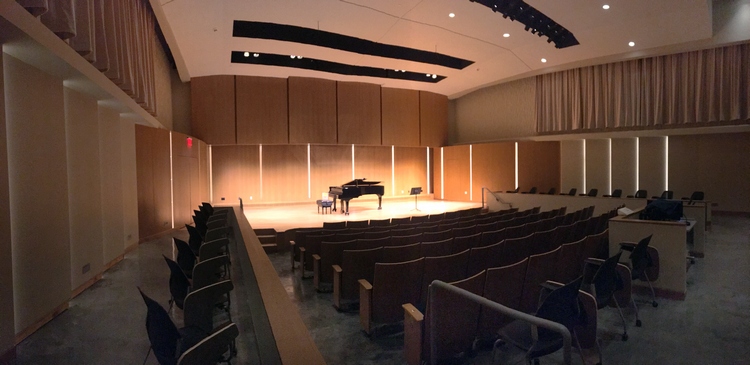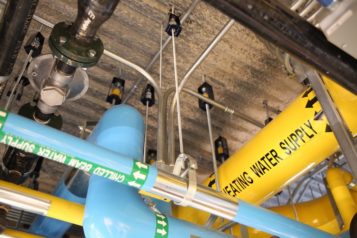
CHICAGO, Ill. – The sounds of violins and voices replaced hammers and drills on Oct. 19 as classes began at Wheaton College’s new Armerding Center for Music and the Arts, located in Chicago, Illinois. Mortenson Construction completed the year-long, $18-million transformation of the former science building in early October, with the college moving in over fall break to the new home for the school’s Conservatory of Music.
In renovating the four floors of the gutted 52,000-square-foot structure, Mortenson has concluded the first phase of Wheaton’s College’s investment in centralizing its music and performing arts program in state-of-the-art educational, research and performance facilities. The new center includes a two-story, 108-seat recital hall with green room; recording studio; digital keyboard lab; chamber rehearsal and performance spaces; classrooms; practice rooms and faculty and administrative offices. The college is raising money for the second phase, which calls for Mortenson to demolish the attached Breyer Hall building and construct a new 648-seat concert hall.
“The requirements for constructing a performing arts space go far beyond the average building, especially the need to minimize sound transfer between rooms and throughout the heating, cooling, electrical and plumbing systems, as well as the aesthetics of the facility,” said Randy Norbeck, Wheaton College’s director of facility services and construction.
Mortenson deployed innovative equipment, materials and techniques to achieve optimal acoustics throughout the facility. The builder executed box-in-a-box construction for each acoustically sensitive room by building double ceilings and double walls. “Floating” floors in studios, rehearsal rooms and practice rooms are constructed with two layers of plywood on neoprene pads and then finish flooring, creating an isolated flooring system that prevents sound transmission between rooms.
Instead of installing traditional rigid-threaded rod hangers for ductwork, conduit and pipes, color-coded acoustic spring isolators were used to hang different-weight pipes for water carrying and electrical systems. This isolation prevents sound transfer through ductwork, pipes and conduit that passes from room to room to serve building systems such as lighting, ventilation and power.
The HVAC for the recital hall is provided by a separate air handler, which uses an underfloor displacement delivery system with 64-cored diffusers under the seats. This system provides excellent comfort, no air noise and energy efficiency. The previous raked-seating lecture hall concrete floor was removed and replaced with a new flat, shaped concrete floor system to achieve maximum volume for the acoustical goals of the recital hall.
Photos courtesy of Mortenson.





 Join our thriving community of 70,000+ superintendents and trade professionals on LinkedIn!
Join our thriving community of 70,000+ superintendents and trade professionals on LinkedIn! Search our job board for your next opportunity, or post an opening within your company.
Search our job board for your next opportunity, or post an opening within your company. Subscribe to our monthly
Construction Superintendent eNewsletter and stay current.
Subscribe to our monthly
Construction Superintendent eNewsletter and stay current.